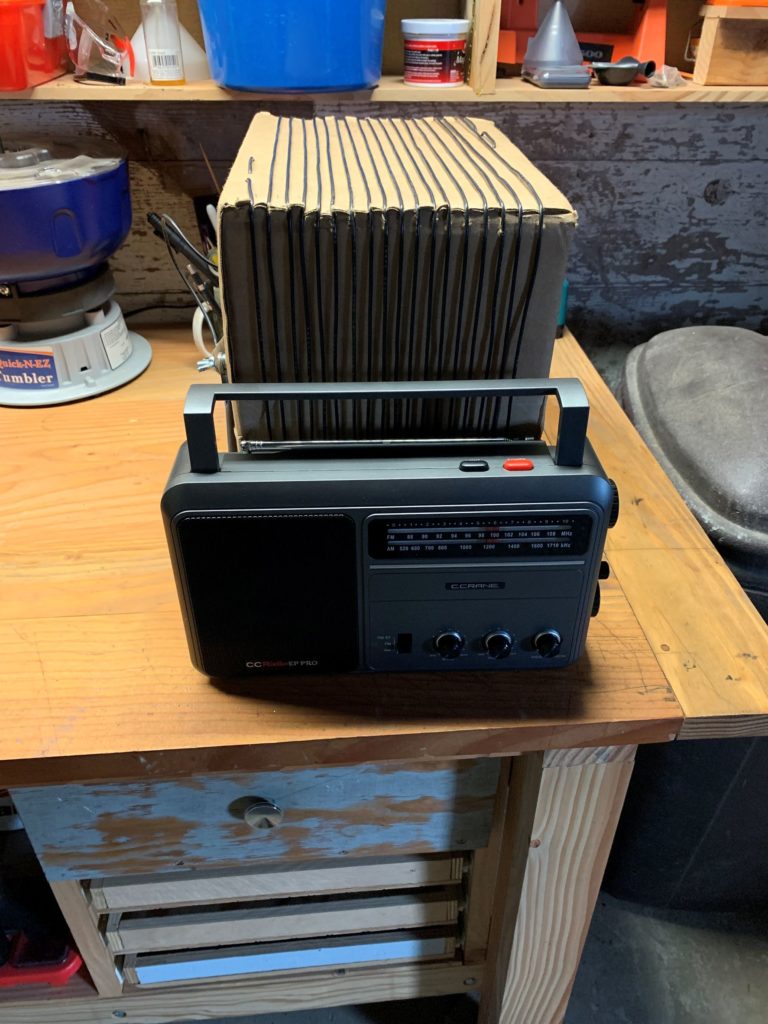This one has been a long time coming. I actually planned on building this last year at this time. In fact, I took the materials to the Boy Scout Christmas tree stand last year to work on in the down time. I will explain my foibles below.
The only real cost to this project was the wire. I bought an entire spool at Habitat for Humanity for $3 because one of the real ends on the spool was broken. The reason this was a problem was because when unwinding the wire, it became a rats nest of wire. It took me hours to unwind and straighten. That is what stopped my progress last year. This year it got some priority because of my basement clean-up efforts.
Before I get too far down the road, the design and plans for this go to Dave Pederson at Trans World Radio which is a 501C ministry to connect the message of Christianity throughout the world. The reason it is cheap is so it can be built worldwide with salvage materials. Dave claims that this can be built in thirty minutes. I would say that it took me a couple of years (just kidding a couple of hours).
My original plan today was to build this antenna and embed the YouTube video. Right now, I have built the antenna and the video needs to be edited and assembled. Part of why I am dragging my feet a little bit is that I don’t see any improvement with the antenna. So, I don’t want to post a video that is marginal or potentially useless. Or said another way, I am spending some time testing it first.

Getting into antennas is kind of a vortex of science namely physics. I am positive that there is a lot to know that I don’t, but I do at least understand some of the basics. Did you know that every AM antenna is is a big coil of wire situated inside the radio? For that reason, the quality of AM reception is always directional or how the radio is sitting.
Building an exterior antenna without connections to the radio and in theory get better reception does it by in some ways concentrating the signal. My goal is to ultimately connect it to my receiver without a bunch of monkeying around with the antenna each time I want to change the signal frequency. So, I am not going to be real happy if it turns out that I need to adjust the location of this antenna frequently.
It turns out that AM radio stations turn down their ‘power’ at night. In my quick research, it seems like the amount of environmental electromagnetic interference is reduced. This would cause some stations to stomp on other stations because of the lack of interference, hence reducing broadcast power to keep them separate. This plays an additional problem with reception as marginal stations usually are even worse at night. Ironically, some stations can be found from long distances at night due to signal bounce. I have heard stations from San Francisco and Calgary Canada at night.
Simple interference itself, is a subject that has lots of gotchas. The best way I would describe it as a Gaussian Field (take a look at that math). Ignoring most of the technical information, wires carrying electricity, fluorescent ballasts, LED transformers and all other powered devices emit interference in a bell shaped pattern. Non-shielded cables (like antennas) are subject high degradation when the lights are on. It is not a lot of fun to sit in the dark listening to the radio, especially when the benefit of radio is that ability to do things concurrently. Grounding itself is not as simple as attaching another wire to ground as it can create a loop causing additional interference.
My CCrane radio is marketed at least as the best AM reception available in a radio. I do admit it is pretty good, it is still subject to the electromagnetic interference from power usage. I can get stations on that radio that I cant get anywhere else. Testing this new antenna on a lessor quality device is probably worth doing. I did try it on the receiver loop as well without effect. So, my tests will be ongoing before I declare this thing done.
End Your Programming Routine: The truth is, I got better reception by splitting the signal from the dipole antenna (for FM). That may have to do with the coax cable being outside and shielded rather than the shape of things. There is more to come on this subject as I haven’t finished my testing yet. There are other designs that use more expensive electrical components, or maybe the loop isn’t big enough or maybe I just don’t know how to use it? I am not sure yet but the quest goes on.
Recent Comments